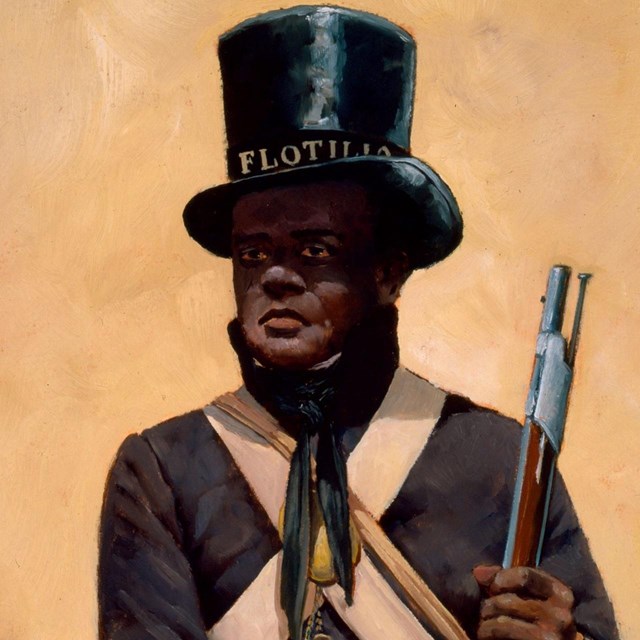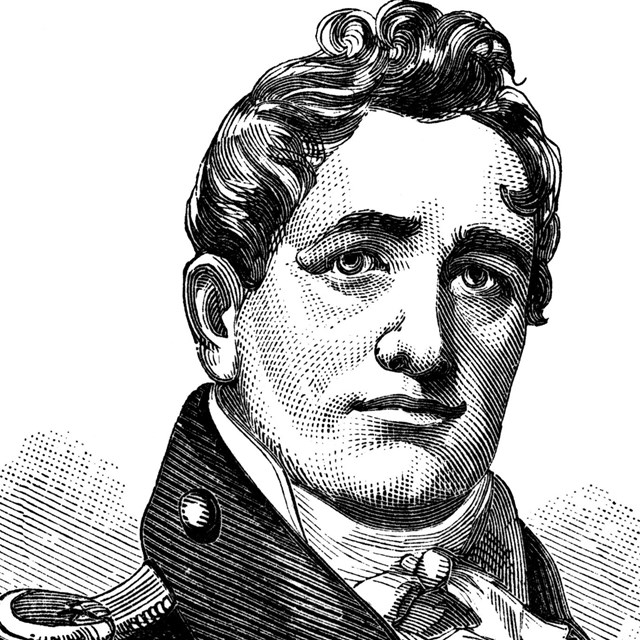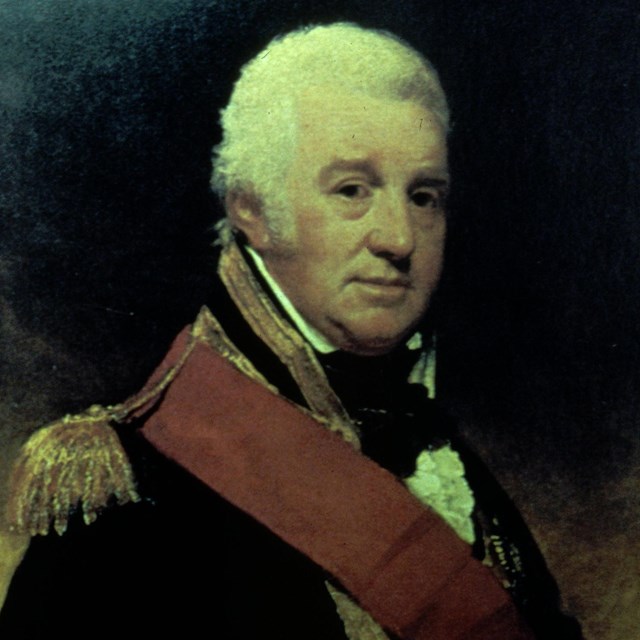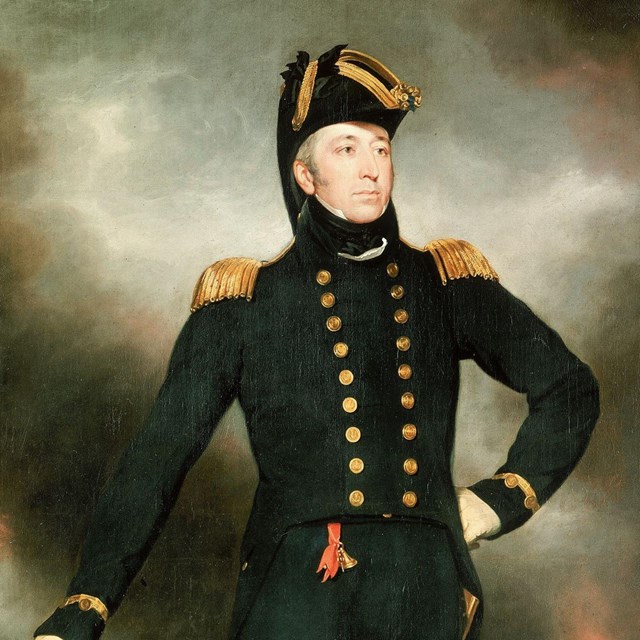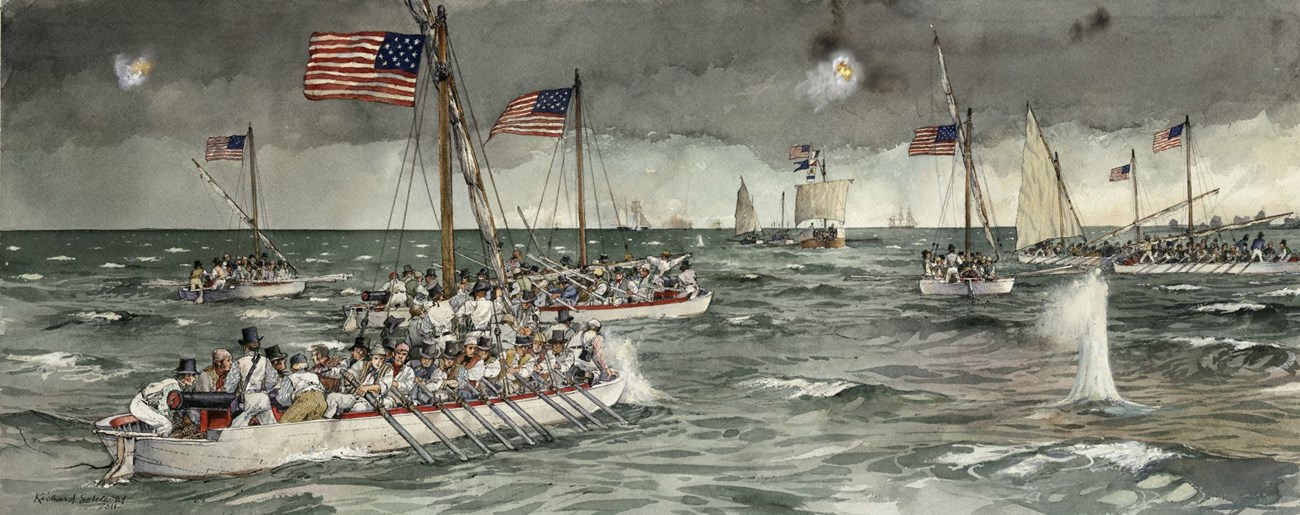
During the summer of 1814, the British navy tried to flush out and destroy the U.S. Chesapeake Flotilla—a rag-tag assembly of armed boats and barges. 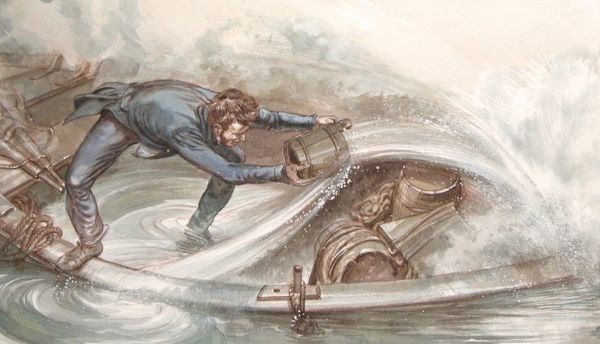
During the June 8 battle, a British Congreve rocket struck a gun barge, killing a flotillaman and exploding gunpowder onboard. As the crew abandoned the burning boat, Sailing Master William Barney, Commodore Joshua Barney’s son and learder of one of the flotilla’s three divisions, quickly hailed his father for permission and, alone, bravely boarded the flaming vessel. The young Barney heroically bailed water into the boat and rocked it about onto the flames, extinguishing the fire and saving the vessel, much to “the very great delight and astonishment of the commodore.” After three days, the hard-fighting Chesapeake Flotilla had almost bested a vastly superior English force. Joshua Barney was convinced that the Americans “must have done them considerable damage.” On June 11, the British pulled a stranded and damaged schooner off a sand bar and began repairs. The First Battle of St. Leonard Creek had changed nothing—the flotilla was still bottled up in the creek. But it had bought the anxious Americans a little more time to prepare their tidewater defenses. The British forces, still waiting for reinforcements, decided to leave Barney alone for the moment. A few weeks later, they clashed again in the Second Battle of St. Leonard Creek. This time, Barney had land support, including a gun battery at present-day Jefferson Patterson Park and Museum. Cannons and infantry on the St. Leonard Creek bluffs supported the Chesapeake Flotilla in a predawn attack on June 26. The plan ended in confusion, but Barney’s barges rowed down the creek with cannons blazing. When the British blockade withdrew to repair dames, Barney’s flotilla escaped up the Patuxent. 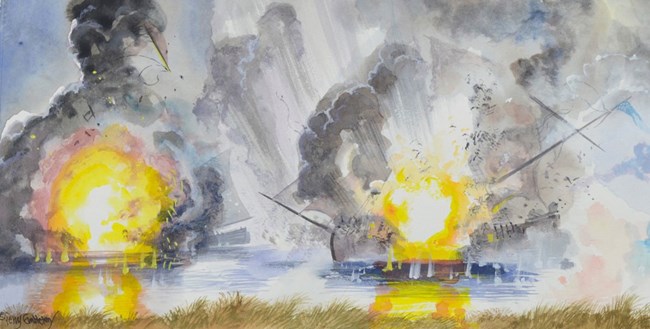
excerpts from "In Full Glory Reflected: Discovering the War of 1812 in the Chesapeake" by Ralph E. Eshelman and Burton K. Kummerow Continue reading about the Battle of Bladensburg. People
|
Last updated: January 13, 2022

